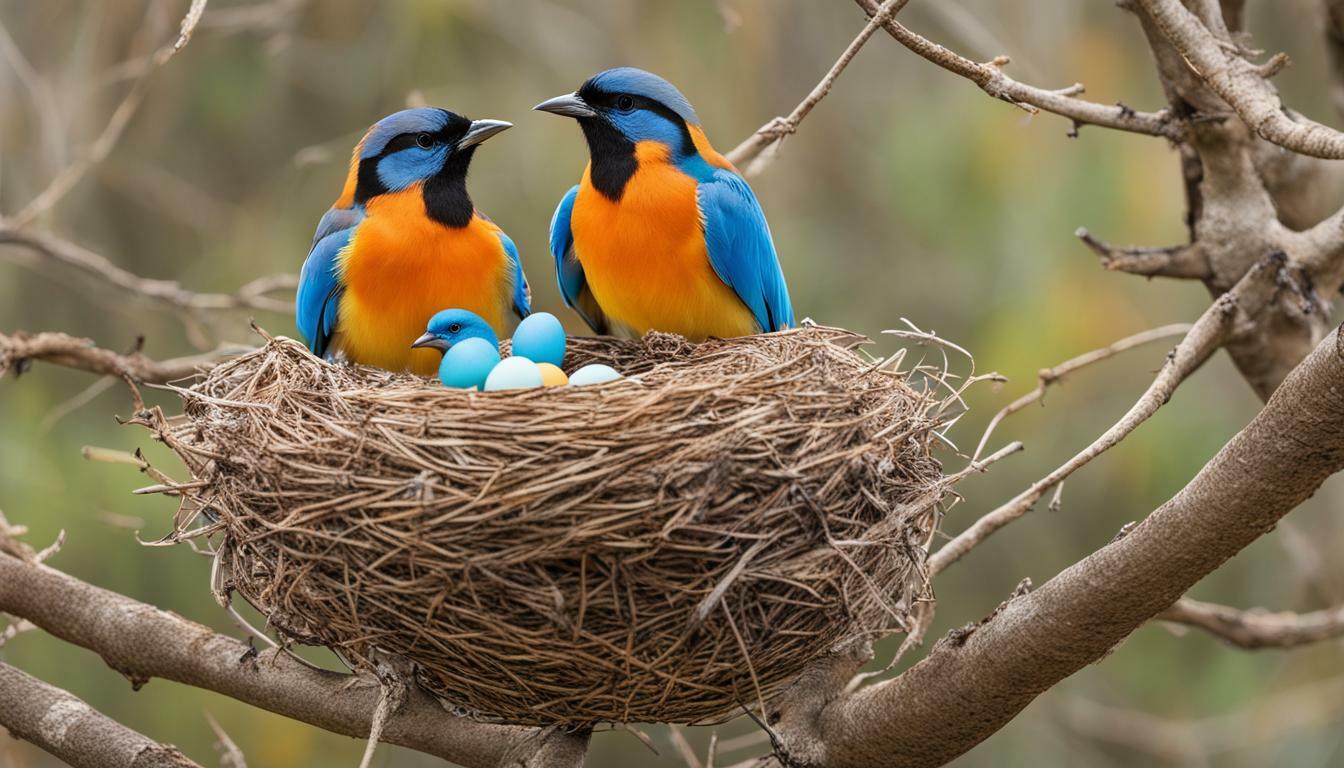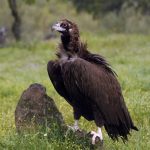Have you ever wondered if birds have testicles, or “balls,” like mammals? Understanding avian anatomy and the bird reproductive system is crucial to answering this question. Let’s explore the unique reproductive strategies of birds and the organs involved in bird reproduction.
Key Takeaways:
- Birds do not have testicles like mammals, but possess avian testes as part of their reproductive system.
- Examining the anatomy and reproductive system of birds sheds light on the differences in reproductive strategies among animals.
- Studying bird reproduction poses unique challenges due to differences in reproductive systems between birds and mammals.
Understanding Avian Anatomy and Reproductive System
Birds have a unique reproductive system that differs from mammals in many ways. Understanding avian anatomy and reproductive organs is crucial to answering the question of whether birds have testicles.
Birds possess specialized internal reproductive organs called gonads, which produce gametes (sperm or eggs). Unlike mammals, birds do not have external genitalia, and their gonads are not visually apparent. Instead, they are located within the bird’s body, near the kidneys.
Male birds possess two testes, which are the primary male reproductive organs. Unlike mammalian testicles, avian testes are relatively small and are not suspended in a sac outside the body. Instead, they are located inside the bird’s body cavity near the kidneys. The size and shape of the avian testes vary depending on the species, and they produce sperm continuously throughout the year.
In contrast, female birds possess ovaries, which are the primary female reproductive organs. The ovaries produce eggs, which are fertilized inside the bird’s body during copulation. The fertilized egg then travels down the oviduct, where it develops into a chick.
Understanding avian anatomy and reproductive organs is crucial in answering the question of whether birds have testicles. Unlike mammals, birds possess avian testes, which are located internally and are relatively small. The absence of external genitalia is another unique feature of the avian reproductive system.
Bird Reproductive Organs: Exploring Bird Gonads
In birds, the primary reproductive organs are the gonads, which produce the gametes necessary for reproduction. In males, these gonads are called avian testes, and they differ in size and structure from mammalian testicles. Understanding the avian testes is crucial for answering the question of whether birds have testicles.
The avian testes are located in the abdominal cavity, close to the kidneys. Unlike mammalian testicles, which are suspended outside the body in the scrotum, the avian testes are internal. The testes are paired organs, each producing and storing sperm until they are ready to be delivered to the female during copulation.
The structure of avian testes is also distinctive. Unlike mammalian testicles, which contain a network of tubules, the avian testes have a series of convoluted tubules that lead to the vas deferens. These tubules are capable of producing large quantities of sperm, as birds have a high reproductive output compared to mammals.
Interestingly, unlike mammals, birds do not possess external genitalia. During copulation, the male bird transfers sperm to the female via a cloacal kiss, where the cloaca (a multi-purpose opening for excretion and reproduction) of both birds meet, allowing for fertilization of the female’s egg.
Overall, the avian testes are crucial components of the unique bird reproductive system. Understanding their structure and function sheds light on the fascinating ways in which birds reproduce and highlights the diversity of reproductive strategies in the animal kingdom.
Avian Testes: The Primary Male Reproductive Organs
While birds do not have external genitalia like mammals, they possess primary male reproductive organs called avian testes. These testes are located internally in the bird’s abdominal cavity, just above the kidneys.
The size and appearance of avian testes differ from mammalian testicles. They are relatively smaller and rounder and lack the scrotum structure found in mammals. However, they serve a similar purpose: to produce sperm for reproduction.
Bird reproductive anatomy includes a complex system of ducts and tubules that carry sperm from the testes to the cloaca, a multi-purpose opening used for waste elimination, copulation, and egg-laying. During copulation, the male bird’s sperm is transferred to the female’s cloaca, where it can fertilize the eggs she lays.
Avian testes play a crucial role in the unique reproductive strategies birds employ. Some birds, like pigeons and doves, produce milk-like substance called crop milk to feed their young. The production of crop milk is triggered by hormonal changes in the male bird’s reproductive system, specifically the testes.
Understanding bird reproductive anatomy and the role of avian testes provides valuable insights into the diversity of reproductive strategies in the animal kingdom. While studying bird reproduction poses unique challenges for researchers, ongoing studies are essential for uncovering the mysteries of avian reproduction.
Female Avian Reproductive Organs and Reproduction Process
To understand bird reproduction, it’s crucial to examine the female avian reproductive organs and the overall process. Female birds possess two ovaries, unlike mammals that have only one. The ovaries are small, elliptical-shaped structures located in the abdominal cavity.
The ovaries contain germ cells that mature into yolks, which will later become eggs. The yolks pass through the oviduct, a long tube-like structure that carries the yolk from the ovary to the cloaca, where the egg is laid. The yolk and the egg white (albumen) are produced and added during the journey through the oviduct. The eggshell is also added before the egg is laid.
The overall process of bird reproduction involves a series of stages, including courtship, copulation, and egg-laying. During courtship, males exhibit specific behaviors and displays to attract a female. After mating, the female lays the egg, enveloping it with her body heat to incubate it until it hatches.
Understanding the structure and function of female avian reproductive organs provides insight into the unique reproductive strategies of birds. By examining the entire process of bird reproduction, we can appreciate the incredible diversity and complexity of avian reproductive systems.
Challenges in Studying Bird Reproduction
Studying bird reproduction poses unique challenges due to differences in reproductive systems compared to mammals. The absence of external bird genitalia, the internal location of avian testes, and the behavioral differences in bird mating strategies all contribute to difficulties in researching avian reproductive organs and processes.
Furthermore, the diversity of bird species and their unique adaptations make it challenging to generalize findings across all birds. Due to variations in size, morphology, and habitat, different bird species have evolved distinct reproductive strategies.
Despite these challenges, ongoing research continues to uncover new insights into avian reproductive processes. Advanced technologies such as DNA sequencing and imaging techniques are enabling scientists to identify the molecular mechanisms underlying bird reproduction.
Understanding bird reproduction is essential for conservation efforts, particularly for endangered bird species. By studying avian reproductive organs and behaviors, researchers can develop new strategies for breeding and conservation programs.
Bird Reproductive Organs: Exploring Avian Testes
While birds do not have testicles like mammals, they possess avian testes as part of their reproductive system. To understand bird reproduction, it’s crucial to explore the unique avian anatomy and reproductive system. The presence of bird gonads differs from testicles in mammals, and understanding the anatomy of avian testes sheds light on the question of whether birds have testicles.
Avian testes are the primary male reproductive organs responsible for producing sperm. They are located in the abdominal cavity and can vary in size depending on the species. Unlike mammalian testicles, avian testes are not encapsulated by a scrotum and are not visible externally.
The role of avian testes in reproduction involves the production of sperm, which is stored in the vas deferens before being passed on to the cloaca during copulation. Avian testes are also essential for the production of testosterone, which plays a crucial role in maintaining male bird characteristics such as plumage, vocalizations, and territorial behavior.
Male birds lack external genitalia, meaning that copulation occurs through the cloaca, a common opening for excretion and reproduction. This unique reproductive strategy allows birds to reproduce efficiently and adapt to their environment’s needs.
Conclusion
Understanding the anatomy and reproductive organs of birds provides valuable insights into their unique reproductive strategies. While the question of whether birds have testicles may seem simple, exploring the presence of avian testes sheds light on the diversity of reproductive systems in the animal kingdom. Through ongoing studies, researchers continue to unravel the mysteries of bird reproduction, expanding our knowledge of the natural world and the wonders it holds.
Do Eagles Fly in Groups Like Other Birds?
Eagles are known for their solitary nature, but they do exhibit an interesting behavior when it comes to flying. Contrary to popular belief, eagles do fly in groups, especially during migration periods. These fascinating facts about eagle flying highlight their ability to navigate long distances together, showcasing their remarkable coordination and social tendencies.
FAQ
Q: Do birds have testicles?
A: No, birds do not have testicles like mammals. Instead, they have avian testes as part of their reproductive system.
Q: How do avian testes differ from mammalian testicles?
A: Avian testes differ from mammalian testicles in terms of size and appearance. They are typically smaller and less prominent.
Q: Where are avian testes located?
A: Avian testes are located within the abdominal cavity of birds.
Q: What is the function of avian testes?
A: Avian testes produce sperm, which is necessary for fertilization during bird reproduction.
Q: Do birds have external genitalia?
A: No, birds do not have external genitalia like mammals. Reproduction in birds occurs internally.
Q: What are the female avian reproductive organs?
A: Female birds have reproductive organs such as ovaries, oviducts, and a cloaca.
Q: How does bird reproduction occur?
A: Bird reproduction involves the transfer of sperm from the male to the female via cloacal contact. The eggs are then fertilized internally and laid by the female.
Q: What are the challenges in studying bird reproduction?
A: Studying bird reproduction poses challenges due to the unique reproductive systems of birds compared to mammals. Additionally, bird reproductive organs can be difficult to access for research purposes.










